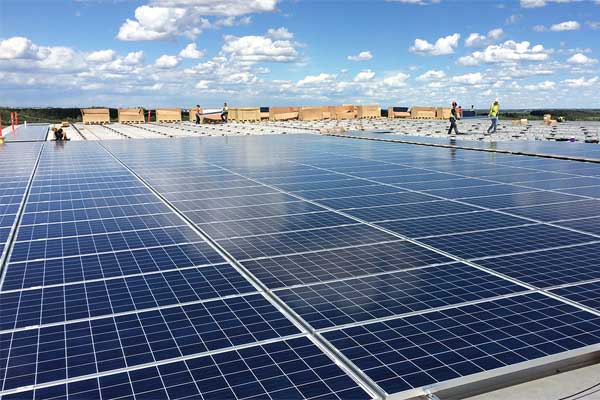Alberta, Canada — Dec 21, 2016: Changes to the regulation that governs micro-generation include increasing the size limit to five megawatts from one megawatt and allowing a micro-generating system to serve adjacent sites, which is especially helpful for operations with more than one building, such as farms.
The revisions allow for more flexibility and a greater variety of configurations. For example, a farm operation or a university campus could have multiple buildings served by one micro-generation system. Other regulatory updates will help to better ensure the reliability, stability, and safety of micro-generation and the distribution grid.
“These changes will provide even more opportunity for Albertans to reduce their reliance on the grid and benefit from the choice to generate clean electricity,” said Margaret McCuaig-Boyd, Minister of Energy. They provide more options and enable larger projects, and will contribute to our province’s target of 30 per cent renewable electricity by 2030.”
Renewing and updating the micro-generation regulation was a recommendation of the Climate Leadership Advisory Panel. The province created Energy Efficiency Alberta to further support this work and other initiatives of the panel—with a mandate to deliver a variety of programs and services for energy efficiency and small-scale renewables. This includes opportunities for cost-effective and meaningful reductions in emissions along with energy savings and economic benefits.
“The AUMA is happy to see that the feedback provided on the micro-generation regulation was taken into consideration in the amendment,” added Lisa Holmes, President, Alberta Urban Municipalities Association. The regulation modifications, including the expanded scale of projects up to five megawatts, provides municipalities with more options when implementing solar PV and other renewable energy projects. We look forward to an ongoing collaboration between municipalities and the province throughout the implementation of Alberta’s Climate Leadership Plan.”
Programs for small-scale and community energy systems continue to be finalized. Details will be announced in 2017. Alberta’s Climate Leadership Plan has already invested over $9 million in solar programs for municipalities, Indigenous communities and farms.
Micro-generation is the production of electricity on a small scale, using renewable and alternative energy sources—typically solar and wind—by individual home owners and small businesses, as well as municipal and community buildings, such as a fire hall, to meet their electricity needs.
Since 2009, micro-generation in Alberta has increased on average by approximately 70 per cent each year. Currently, there are more than 1,700 micro-generation sites in the province, generating over 16 megawatts of electricity.













Comments